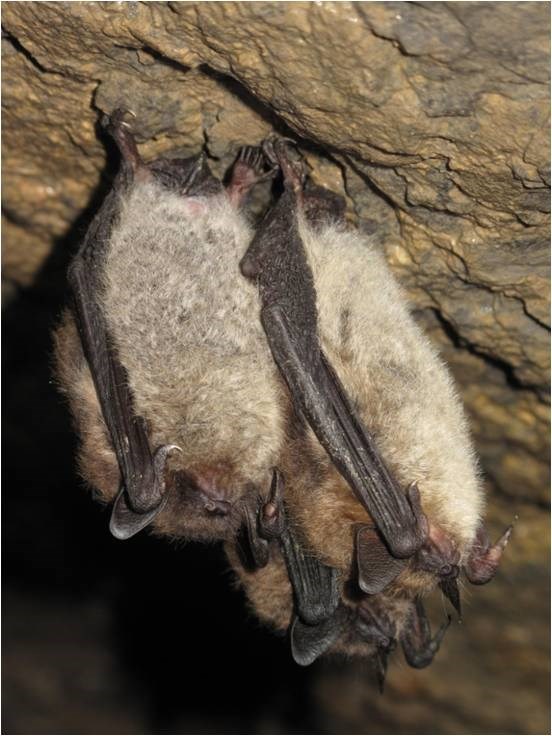
There’s a fungus slowly spreading across North America, and it’s wreaking havoc on the continent’s bat populations. Even though it hasn’t yet reached Alberta, Parks Canada is taking precautions.
Parks representative Kim Weir said when the deadly fungus first surfaced in southern Ontario, Parks staff met with staff from Alberta Sustainable Resource Development and Alberta Parks. The outcome was a decision to close any bat hibernation caves in the province for recreational use.
For Jasper, that meant closing Procrastination Pot—a known batcave and recreational caving destination.
Weir said Parks has been monitoring the cave since 2010 to stay on top of population changes and to detect any sign of disease. Parks employees are also electronically monitoring abandoned mines for signs of other bat hibernation sites.
Such early intervention stems from the intensity and severity with which the fungus can wipe out bat colonies once it takes hold.
Geomyces destructans, better known as white nose syndrome, transmits extremely easily from one bat to another, and once it gets into a colony it can kill up to 99 per cent of it.
Weir explained that, in Alberta, bats are the only major predator of night flying insects. The animal’s fast metabolism means it needs to eat a lot, and this voracious feeding helps keep insect populations in check.
Wildlife biologist Dave Hobson said that without bats trimming back the number of insects, farmers would likely have to use a lot more pesticides to control bug populations.
Hobson explained how the fungus sends a “root system” into the skin of the bat and feeds on the animal’s skin tissue.
This invasion causes bats to wake up multiple times during winter hibernation, interrupting the hibernation process and effectively starving them to death.
The white spores at the top of those invading “roots” are the visible manifestation of the fungus, even though most of it actually lives inside the animal. Often dead bats are found with a white ring around their nose, which is how the fungus earned the moniker white nose syndrome.
Hobson said scientists are now quite certain the fungus originated in Europe, and was transmitted here by human activity on the Atlantic Ocean.
While the white nose fungus poses no threats to humans, it’s likely people can transmit the spores to bats, aggravating the spread of the infection. This, Hobson explained, is why organizations like Parks take cave closures so seriously.
One careless cave explorer carrying the fungus’ spores could infect a single bat, possibly leading to the collapse of the entire colony.
“In one fell swoop you could move that fungus across North America the same way it moved across the Atlantic Ocean,” Hobson said.
Hobson said although the fungus is not spreading west as quickly as it did south, it is creeping closer to Alberta every year. He admitted that cave closures likely won’t stop the spread in the long run, but that they can help delay it.
“The hope is that through research we can identify a way to deal with the fungus – and hopefully we can do that before it reaches Alberta,” he said.
For Jasper, prevention means vigilance, and protecting bat colonies as much as possible. Weir explained that until Parks Canada is certain that the spread of white nose syndrome is not a concern for bat populations in the park, Procrastination Pot will remain closed to public recreational use.
 Trevor Nichols
[email protected]
